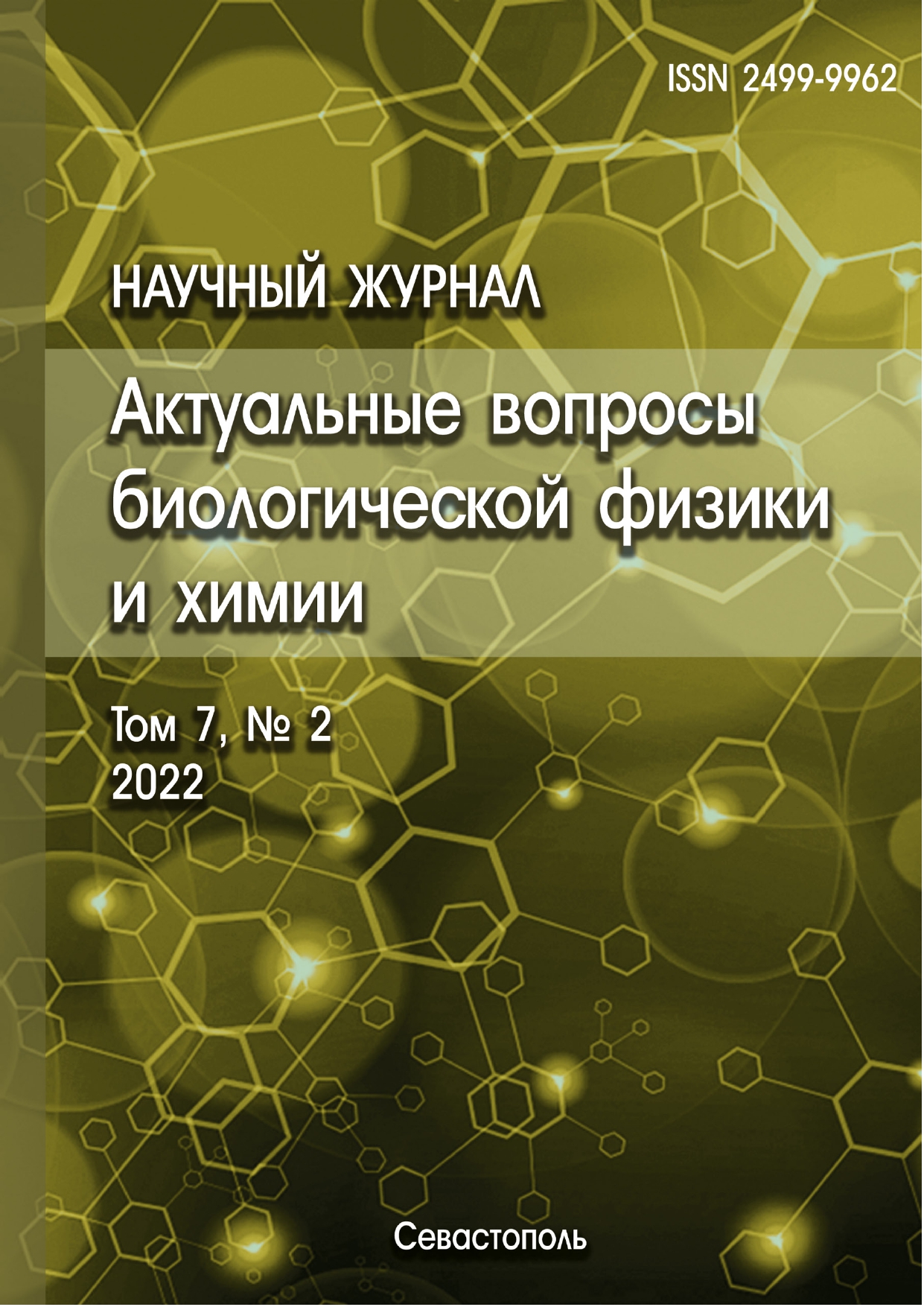Moscow, Moscow, Russian Federation
Moscow, Moscow, Russian Federation
Moscow, Moscow, Russian Federation
Moscow Pedagogical State University (Institute of Biology and Chemistry)
N.M. Emanuel Institute of Biochemical Physics of Russian Academy of Sciences
Moscow, Moscow, Russian Federation
Aluminum phthalocyanine chloride (AlClPc) is a photoactive macroheterocyclic compound, which, in its monomeric form, is used as a photosensitizer (PS) in photodynamic therapy and diagnostics. In this paper, its physicochemical properties were studied in organic (N, N-dimethylformamide, DMF) and aqua-organic (DMF-aqua) media. It has been shown that the hydrophobic properties of AlClPc prevent its widespread use in various pharmacological compositions due to its tendency to aggregate in aqueous solutions, which leads to the formation of non-fluorescent aggregates and a decrease in its photodynamic activity. The geometry and electronic structure of AlClPc in the monomeric and dimerized (H- and J-aggregates) states were studied using quantum-chemical calculations with the help of the electron density functional theory (DFT) method. Different types of orientation during the dimerization of AlClPc molecules are presented: “back to back”, “head to head”, “head to back”, as well as mixed-oriented types. It has been proven that both in DMF and DMF-aqua media, the preferred orientation is “back to back”, without sacrificing the monomeric geometry of the constituent molecules in the dimer. It is shown that in an aqueous organic solvent the AlClPc molecule is easily hydrated with the formation of a coordination bond between the Al atom of the AlClPc molecule and the O atom of the aqua molecule. The bond length is 2.23 Å, and the hydration energy is 16.84 kcal/mol. Hydration promotes the formation of dimers, in which two aqua molecules play the role of "bridges" between two AlClPc molecules. In such dimer, each aqua molecule has two bonds: one coordination bond between its O atom and the Al atom of one of the AlClPc molecules and one hydrogen bond between its H atom and the N atom of another AlClPc molecule. Based on the calculated data obtained, the AlClPc dimers in the DMF medium were assigned to H-aggregates, and in the DMF-water medium, to J-aggregates, respectively.
aluminum phthalocyanine chloride, physico-chemical properties, optical absorption, quantum-chemical calculations, aggregation
1. Klimenko I.V., Lobanov A.V. Biocompatible supramolecular systems based on chlorin e6: preparation, physicochemical properties. Russian Journal of Biological Physics and Chemistry, 2019, vol. 4, no. 4, p. 546. (In Russ.) EDN: https://elibrary.ru/ZQXVZR
2. Klimenko I.V., Trusova E.A., Shchegolikhin A.N., Lobanov A.V., Jurina L.V. Surface modification of graphene sheets with aluminum phthalocyanine complex. Fullerenes, Nanotubes and carbon nanostructures, 2022, vol. 30, no. 1, doi:https://doi.org/10.1080/1536383X.2021.1976754. EDN: https://elibrary.ru/HXTAVB
3. Nees F., Wennmohs F., Becker U., Riplinger C. The ORCA quantum chemistry program package. Journal of Chemical Physics, 2020, vol. 152, p. 224108, doi:https://doi.org/10.1063/5.0004608. EDN: https://elibrary.ru/XTBXOU
4. Martynov A.G., Mack J., May A.K., Nyokong T., Gorbunova Yu.G., Tsivadze A.Yu. Methodological survey of simplified TD-DFT methods for fast and accurate interpretation of UV-Vis-NIR spectra of phthalocyanines. ACS Omega, 2019; vol.4, no. 4, p. 7265, doi:https://doi.org/10.1021/acsomega.8b03500. EDN: https://elibrary.ru/SIOXDS
5. Perdew J.P, Burke K., Ernzerhof M., Generalized gradient approximation made simple. Physical Review Letters, 1996, vol. 77, p. 3865, doi: 0.1103/PhysRevLett.77.3865.
6. Weigend F., Ahlrichs R. Balanced basis sets of split valence, triple zeta valence and quadruple zeta valence quality for H to Rn: Design and assessment of accuracy. Physical Chemistry Chemical Physics, 2005, vol. 7, p. 3297, doi:https://doi.org/10.1039/B508541A.
7. Grimme S., Antony J., Ehrlich S., Krieg H., A consistent and accurate ab initio parametrization of density functional dispersion correction (DFT-D) for the 94 elements H-Pu. Journal of Chemical Physics, 2010, vol. 132, p. 154104, doi:https://doi.org/10.1063/1.3382344. EDN: https://elibrary.ru/NAHYOL
8. Ernzerhof M., Scuseria G.E. Assessment of the Perdew-Burke-Ernzerhof exchange-correlation functional. Journal of Chemical Physics, 1999, vol. 110, p. 5029, doi:https://doi.org/10.1063/1.478401.
9. Barone V., Cossi M. Quantum Calculation of Molecular Energies and Energy Gradients in Solution by a Conductor Solvent Model. Journal Physical Chemistry A, 1998, vol. 102, p. 1995, doi:https://doi.org/10.1021/jp9716997.
10. Adamo C., Jacquemin D. Te calculations of excited-state properties with time-dependent density functional theory. Chemical Society Reviews., 2013, vol. 42, p. 845, doi:https://doi.org/10.1039/c2cs35394f.
11. Kasha M. Energy transfer mechanisms and the molecular exciton model for molecular aggregates. Journal of Radiation Research, 1963, vol. 20, p. 55, doi:https://doi.org/10.2307/3571331.










